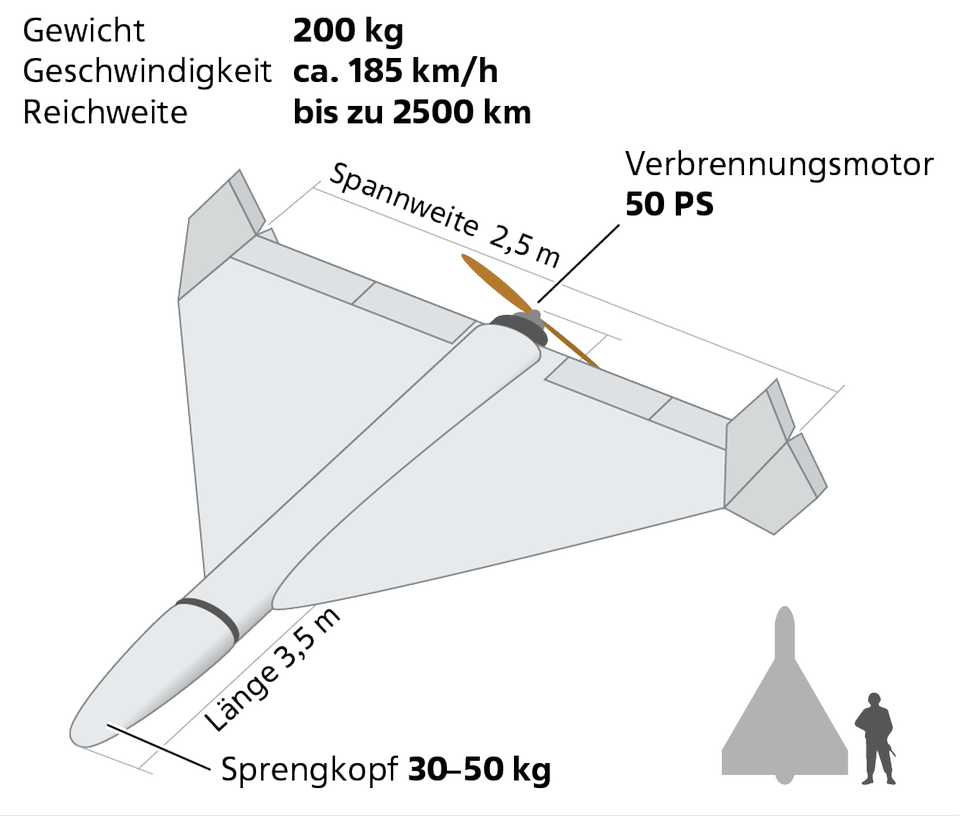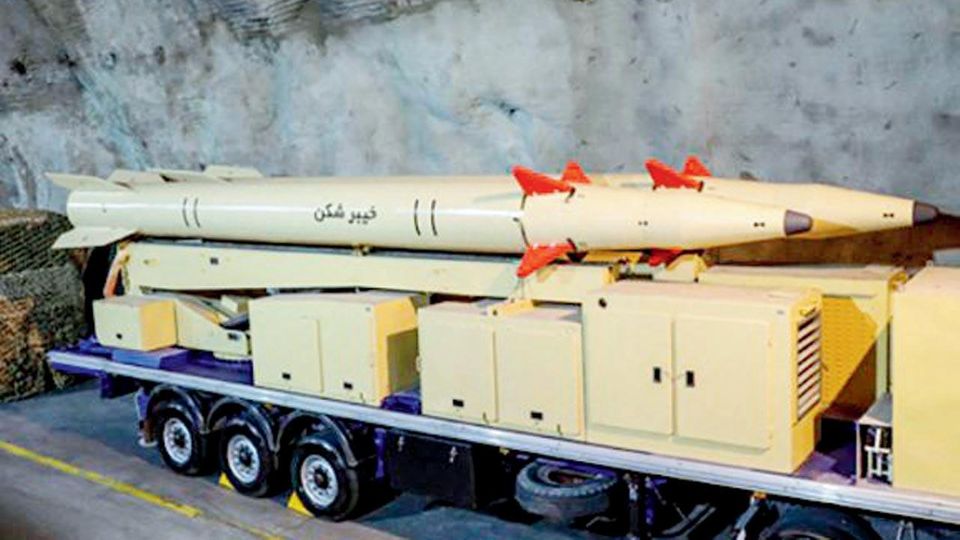Iran’s armament
Shahed 136: Why These Drones Are Designed to Fail
The starter for the drones is on a normal truck.
© Iranian Ministry of Defense
Iran launched 170 drones against Israel – all were intercepted. That’s no reason to celebrate. Because: The drones called “Shahed 136” are built to be shot down.
Simple and cheap
The special feature of the Shahed drone is its simple construction. It starts with the drive. The drone has a pusher propeller with a small 4-cylinder 2-stroke boxer engine. 50 hp is enough for the construction. It transports a small warhead weighing 40 to 60 kilograms and reaches a speed of 185 km/h, other information says 240 km/h. Iran states the range is up to 2,200 kilometers, but Western experts have doubted this. However, when striking Israel, the drones had to travel over 1,000 kilometers. The Mode-P motor produces only a small amount of waste heat and the drone has a low radar signature, making it difficult for anti-missiles and manpads to combat it. The use of anti-aircraft tanks such as the Gepard has proven to be most effective in Ukraine. The Ukrainians also intercept the drones with pick-ups on which a multiple machine gun is mounted.

Infographic: The Iranian kamikaze drone Shahed 136
© DPA Infogafik/stern; Source: dpa, UK Defense Intelligence, Army Recognition
The basic construction can be varied. The drone can be equipped with a simple jet engine for higher speeds or can be equipped with a stealth coating. In the For Ukraine, it would make sense to accept a shorter range and increase the size of the warhead. It would also be conceivable to install more powerful electronics. There is various information about the price of the drone. Russia is said to have paid almost $200,000 for Iranian drones. But prices as low as $20,000 are also mentioned. Given the simple structure, manufacturing costs of $20,000 to $30,000 are likely to be realistic.
The amount of drones does it
This ridiculous price is the real trump card of the Shahed drones. Compared to other weapons, they cost almost nothing and can therefore be manufactured and used in large quantities. In Ukraine, almost all drones of this type are shot down, but that is precisely their purpose. They tie up the anti-aircraft defense. And their numbers make defense difficult. Medium- and longer-range air defense systems are not allowed to combat cheap drones because this would result in the loss of valuable and limited defense missiles. If you launch two defense missiles at a cost of a million dollars to shoot down a drone that costs $20,000, it can’t work well in the long run.
Regardless of the price, these drones serve to oversaturate: so many are sent out until the air defense has fired its defense missiles. The attacked country must find a way to repel the drones without exhausting themselves. Fighter jets took on this task in the attack on Israel. The majority of the drones were attacked well in front of Israeli territory by Israeli and allied aircraft. In this particular situation it was the right decision. In another scenario, probably not. This time the fighter jets were able to hunt drones undisturbed. But to do this they have to expose themselves. If the enemy attacks the jets with their own fighter planes or long-range defensive missiles, hunting drones will be much more difficult.
The drone swarm protects the dangerous weapons
In a serious attack, far more dangerous long-range weapons attack under the protection of cheap drones, which then carry out the actual precision strikes. With the help of its allies, Israel was able to repel Iran’s test attack. In an emergency, ten times as many missiles would be in the air, and the fighter jets would also be attacked. China is working on a clone of the Iranian cheap drone called Sunflower 200. Given the Chinese production know-how, the Beijing copy is unlikely to be manufactured in a better factory, but rather largely automated. The Sunflower could then be produced in even larger dimensions. If Beijing launches 10,000 Sunflowers in an attack, any defense would currently fail.




